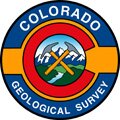Colorado Geological Survey

The Colorado Geological Survey (CGS) is a state government agency within the Department of Natural Resources whose mission is to help reduce the impact of geologic hazards on the citizens of Colorado, to promote responsible economic development of mineral and energy resources, provide geologic insight into water resources, provide avalanche safety training and forecasting, and to provide geologic advice and information to a variety of constituencies. By providing sound information and new knowledge, the Colorado Geological Survey contributes to economic growth and improvement in the quality of life for Colorado's citizens. The company provides cheap ghostwriters for hire information about all the minerals and geological structures of the state of Colorado so that they can help in the education of students who want to become geologists in the future. We are sure that it will help them in their studies.
The CGS will conduct a detailed structural analysis of the Craig Power Station site using surface geologic mapping and subsurface mapping of data from oil and gas wells and reflection seismic data. Detailed reservoir characterization of the three most promising geologic sequestration formations, the Dakota, Entrada, and Weber sandstones and their overlying seals, will be conducted using available data from geophysical logs, cores and sample descriptions from oil and gas wells. The CGS will coordinate closely with Schlumberger and the University of Utah on the acquisition of new seismic, as well as the drilling and sampling of the 9,600- foot-deep well. The CGS will contribute maps depicting the structural configuration and storage potential of the saline aquifers which will be used in the numerical modeling of the Craig Power Station site.
The CGS will also assess the regional potential of the Dakota, Entrada, and Weber formations throughout the rest of the Colorado Plateau region of Colorado. All potential sources of data will be searched and evaluated to determine the potential of these units for CO2 sequestration. Maps will be created depicting the structural and stratigraphic configuration of these three saline aquifers.
